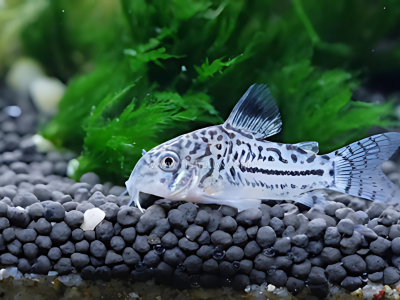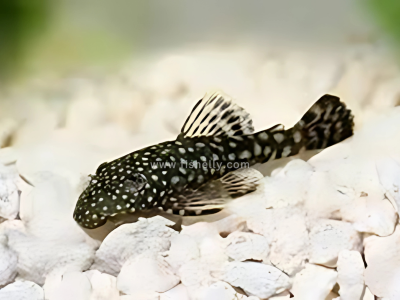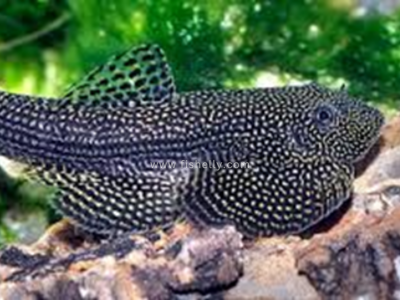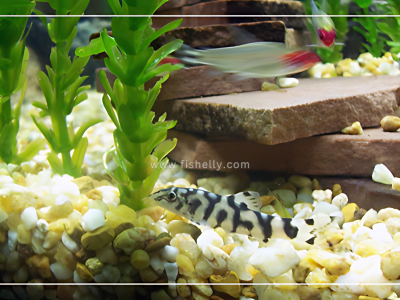Top Bottom Feeder Fish for a Clean, Healthy Aquarium
Keep your tank clean and algae-free with top bottom feeders like Corydoras and Plecos. These fish help balance your aquarium while adding beauty.
Table of Contents
- What Are Bottom Feeder Fish?
- Key Advantages of Bottom Feeder Fish
- Top 9 Best Bottom Feeder Fish for Your Aquarium
- How to Select the Correct Bottom Feeder
- Faq
- Conclusion
In constructing a balanced and healthy aquarium, bottom feeder fish are the unsung heroes. Not only do these aquatic cleaners bring diversity and activity to your aquarium, but they also prevent algae, uneaten food, and debris settling at the bottom of the substrate. Whether you're a novice aquarist or a pro, the best bottom feeder fish can make your tank's ecosystem better.

What Are Bottom Feeder Fish?
Bottom feeders are fish that naturally spend most of their time at the base of the aquarium. They typically have downward-facing mouths designed to scavenge for food on the tank floor. Most are peaceful, hardy, and great additions to a community tank.
Key Advantages of Bottom Feeder Fish
Natural Cleaners: Consume algae, leftover food, and organic waste.
Encourage Healthy Substrate: Avoid compaction and anaerobic areas.
Increase Biodiversity: Increase activity in the lower parts of the tank.
Complement Other Species: Suitable for most peaceful community fish.
Low Maintenance: Most species are robust and easy to maintain.
Top 9 Best Bottom Feeder Fish for Your Aquarium
Bottom feeder fish are a vital part of any well-stocked aquarium. They clean the environment by consuming leftover food, algae, and detritus that accumulate on the tank bottom. Aside from their cleanliness properties, most of these species are great to observe and add a tremendous amount of personality to your tank. Here's a closer examination of the best bottom feeder fish for your aquarium, with in-depth information about each.
1. Corydoras Catfish
Corydoras, commonly referred to as "Cory Cats," are some of the most sought-after bottom feeders because they are very friendly and playful. They grow between 1.5 and 3 inches and do well in tanks with a capacity as low as 10 gallons. Corys are schooling fish and prefer to be kept in a group of five or more. These peaceful and social bottom dwellers spend most of their time sifting through the substrate, looking for uneaten food and debris. With their cute looks and low-maintenance lifestyle, Corydoras are ideal for newbies and veteran aquarists alike.

2. Bristlenose Pleco
The Bristlenose Pleco is one of the most popular algae eaters that grows 4 to 6 inches in length, which is an easy size to manage for tanks as small as 30 gallons. Unlike the Common Pleco, which can grow over a foot long, Bristlenose Plecos remain relatively small and are ideal for home aquariums. Their unique bristle-like appendages on the snout give them a quirky and interesting appearance. These fish are shy and nocturnal, quietly working at cleaning algae from the walls and decorations of the tank.

3. Kuhli Loach
Resembling tiny eels, Kuhli Loaches are interesting bottom fish that reach lengths of up to 4 inches. They need a 20-gallon or larger tank with lots of places to hide and soft sand or mud to dig into. Loaches are night active, hiding during the day, but with increased activity at night. If kept in schools, they tend to be bolder and in sight. Kuhli Loaches are friendly, active, and a great option for those who want to introduce a new twist to their community aquarium.

4. Otocinclus Catfish
The Otocinclus, or "Oto," is a small catfish species ideal for small tanks since they only reach 1 to 2 inches in length. A 10-gallon tank is adequate for a small school. These peaceful, schooling algae eaters are one of the top choices for nano tanks and community tanks with peaceful fish. They excel in well-established tanks with stable parameters and clean conditions. Otos will go at it day and night to get rid of algae, which makes them one of the top picks for having your aquarium glass and leaf tips algae free.

5. Yoyo Loach
The Yoyo Loach is a lively, semi-aggressive fish that brings personality to any tank. Coming up to sizes of 2.5 to 6 inches, they need a 30-gallon tank or bigger. They're especially recognized for their distinctive bold pattern that's in the form of the letters "YOYO" along their body. They're very good at regulating snails and cleaning up leftover food from the substrate. Although they are a little possessive about their own species, they are otherwise quiet when housed in small groups and allowed ample places to hide.

6. Synodontis Catfish
Synodontis Catfish are bigger bottom feeders that usually range from 3 to 8 inches. They need at least a 40-gallon tank and are more suitable for hobbyists with experience. They are active, curious fish that are slightly territorial, particularly at feeding time. With their distinctive looks and active nature, Synodontis species are a highlight in larger aquariums. They also serve to clean the bottom by eating leftover food and organic debris, though they must be fed a balanced diet on a regular basis.

7. Glass Catfish
Glass Catfish are a sight to behold because of their see-through bodies, which show their internal organs and provide them with an otherworldly, ghostly appearance in the water. Reaching 5 inches in size, they require a tank of at least 30 gallons and should be kept in groups to feel safe. Although they are not the best bottom cleaners, they do graze on the substrate and can help dissipate small food particles. Their docile nature renders them appropriate for peaceful community aquaria.

8. Panda Garra
The Panda Garra is one of the more obscure but awesome algae eaters that reach roughly 3 to 4 inches in size. They do great in tanks 20 gallons and larger, particularly those with vigorous water flow and high oxygen concentrations. Panda Garras are fairly peaceful but tend to be nippy with others of their kind, so having a lot of room and hiding places is suggested if keeping multiple. Their playful demeanor, flexibility, and striking looks make them an underappreciated gem among bottom dwellers.

9. Hillstream Loach
Hillstream Loaches are one of the most interesting-looking bottom-dwellers, with their flat body and wide fins looking almost like little stingrays. They remain small, only 2 to 3 inches long, and thrive best in 20-gallon tanks with heavy current and cold, well-oxygenated water. These loaches are great algae eaters and enjoy adhering to rocks and glass. Sensitive to water parameters, but rewarding to keep if the correct setup is done.

How to Select the Correct Bottom Feeder
Tank Size: Select a species that is suitable for the size of your tank.

Water Parameters: Maintain compatibility in pH, temperature, and hardness.
Tank Mates: Bottom feeders are generally peaceful, but check for aggression.
Substrate Type: Sand or smooth gravel is best for most species.

Diet Variety: Supplement their diet with sinking pellets, wafers, and fresh vegetables.

Hiding Spaces: Provide caves, plants, and décor for security and comfort.

Faq
1. What is a bottom feeder fish?
A fish that stays at the tank bottom and eats leftover food, algae, and waste.
2. Do I need bottom feeders?
They’re not a must, but they help keep the tank clean.
3. Are they good for small tanks?
Yes, many like Corydoras and Otocinclus are great for small tanks.
4. Are they peaceful with other fish?
Most are peaceful and good for community tanks.
5. What do they eat?
Leftovers, algae, sinking pellets, and veggies.
6. How many should I keep?
Some like groups (Corys, Kuhlis); others can be solo (Plecos).
7. Can I mix different bottom feeders?
Yes, if they’re compatible and the tank is big enough.
8. Do they replace tank cleaning?
No, they help, but you still need to clean the tank.
9. What substrate is best?
Soft sand or smooth gravel to protect them.
10. Best ones for beginners?
Corydoras, Otocinclus, and Bristlenose Pleco.
11. Which ones eat algae?
Otocinclus, Bristlenose, Panda Garra, Hillstream Loach.
12. Are they active during the day?
Some are (Corys), others are nocturnal (Plecos, Kuhlis).
Conclusion
Bottom feeders are invaluable in establishing a well-rounded and successful aquatic environment. They help maintain the health of your tank by clearing out waste, algae, and leftover food and adding action and interest to the lower regions of the aquarium. Whether you are building your first tank or replacing one that is already established, introducing one or more of these bottom dwellers can make a huge difference in its appearance and cleanliness.
Got questions or tips? Drop them in the comments!






